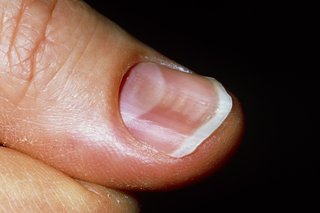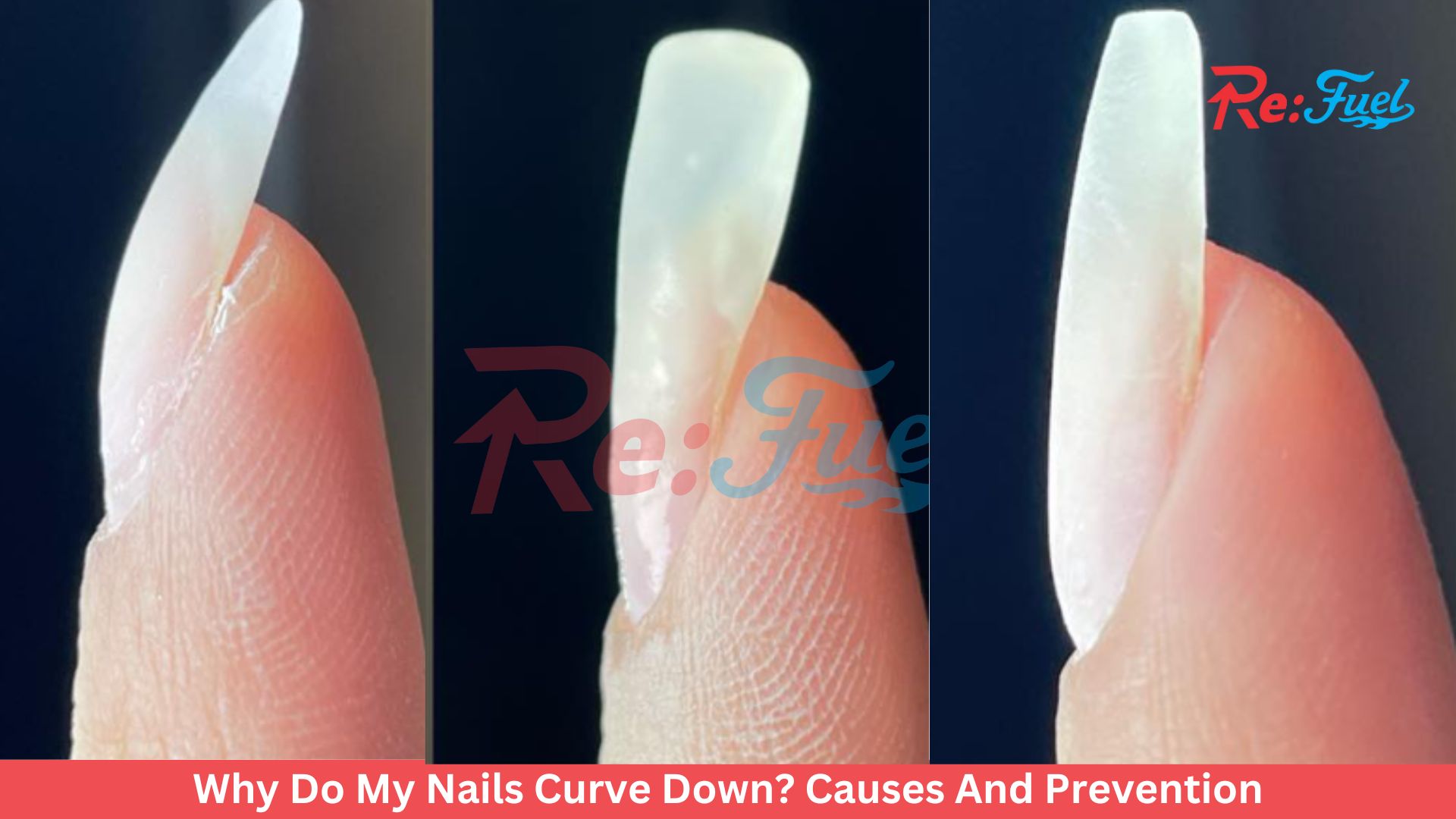Nails, often regarded as a window to our overall health, can reveal subtle clues about underlying medical conditions. One of the most noticeable nail abnormalities is when they curve down, resembling upside-down spoons. This phenomenon is known as clubbing and can signify various health issues, primarily related to heart or lung problems.
However, there are other types of nail curving and changes that may also warrant attention. In this article, we will explore the causes of nail curving, its various types, and potential solutions to address this concern.
Types Of Nail Curving
- Spoon Nails (Koilonychia): Spoon nails are characterized by nails that become soft and excessively curved, resembling a spoon’s concave shape. While this condition may occur in newborns and resolve without treatment, in other cases, it may indicate health issues, such as iron-deficiency anemia. Consulting a healthcare professional is crucial to determine the underlying cause and appropriate treatment.
- Nails That Curve at the Tips: Some individuals experience nails that curve over their fingertips due to thickening of the tissue underneath the nail. This condition may be harmless, especially if it runs in families. However, if it develops later in life, it may be associated with an underlying health condition, necessitating medical evaluation.
- Nails That Curve Around the Sides (Ingrown Nails): Ingrown nails occur when nails curve inward at the sides, often affecting toenails. Tight-fitting shoes, improper nail trimming, and other factors can contribute to this condition. In severe cases, treatment may involve partial or complete nail removal.

Other Nail Issues: Apart from nail curving, various other nail changes may require attention, including:
- Crumbly or brittle nails due to fungal infections, lichen planus, thyroid disorders, or nail psoriasis.
- Small dents and pits in the nails, which can result from conditions like eczema, psoriasis, reactive arthritis, or alopecia areata.
Also Read: Stained Nails? Here’s How To Get Hair Dye Off Nails Safely
Common Causes Of Nail Curving
- Iron Deficiency Anemia: Iron deficiency can lead to curved nails among other symptoms like paleness, fatigue, weakness, rapid heartbeat, and hair loss. Treatment options include consuming iron-rich foods, taking supplements as recommended by a doctor, or intravenous supplementation when necessary.
- Nail Psoriasis: About 90% of individuals with psoriasis develop nail psoriasis at some point. Besides nail curving, symptoms may include thickening and the presence of shallow or deep holes in the nails. Treatment may involve topical creams, light therapy, injections, or oral medications.
- Raynaud’s Disease: Raynaud’s disease affects blood flow to specific body parts, often causing fingers or toes to turn pale, numb, and painful. Managing stress, medication, or surgery may be recommended for treatment, although there is no cure.
- Hemochromatosis: Hemochromatosis is a genetic disorder that leads to excessive iron absorption from the diet. Curved nails are among its symptoms, alongside hair loss, skin discoloration, joint pain, and more. Regular removal of blood is a common management strategy to reduce iron levels.

Also Read: What Are Overlay Nails? A Comprehensive Guide To This Nail Trend
Some Health Tips For Preventing Nail Curving
While addressing the root causes of nail curving is essential, there are also preventive measures and lifestyle changes that can help maintain healthier nails:
- Nutrient Supplements: Ensure your diet includes essential vitamins like B12, D3, and iron. If needed, consult a healthcare professional for supplements. Protein-rich foods can also contribute to stronger nails.
- Cuticle Care: Regularly push back and massage cuticles to promote nail health.
- Avoid Chemical Products: Limit the use of chemical-rich nail products, as they can negatively affect nail biotin and lead to curving.
- Trim Your Nails: Regular nail trimming keeps nails neat, clean, and reduces the risk of accidents.
- Protect Your Nails: Wear rubber gloves when necessary, such as when working in the kitchen or cleaning, to shield your nails from dust and chemicals.
- Biotin Supplements: Biotin, a water-soluble vitamin, has been shown to improve nail health. Consult your doctor before incorporating it into your routine.
Nail curving, whether due to clubbing, underlying health conditions, or improper care, should not be ignored. It serves as a valuable indicator of our overall well-being. Recognizing the causes and types of nail curving and taking preventive measures can help maintain healthy and beautiful nails. If you notice changes in your nails, consult a healthcare professional for a thorough evaluation and guidance on the best course of action to address the underlying issues. Remember, healthy nails often reflect a healthy you.

